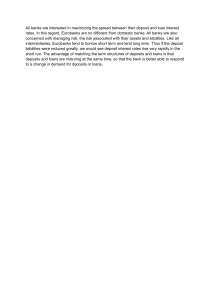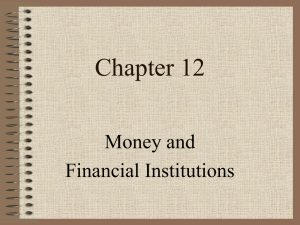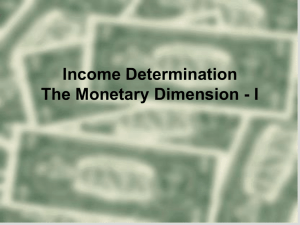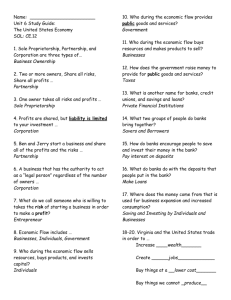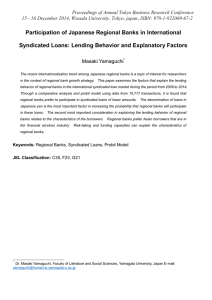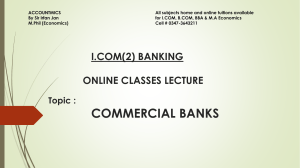COMMERCIAL BANK OPERATIONS
advertisement
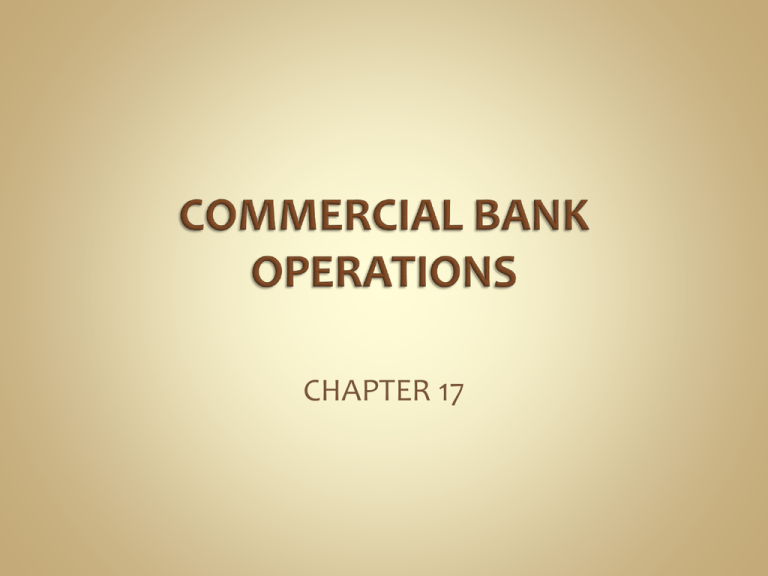
CHAPTER 17 Transaction Deposits; checking accounts Commercial accounts non-interest bearing Interest bearing checking accounts Savings Deposits; pass-book savings Time Deposits; short-term CDs Managing Term risk Penalties for early withdrawal 2 D. Money Market Deposit Accounts; providing higher yields via T-bills, S-T securities Provide better returns to customers with large balances Provide roll-up services for commercial clients Eurodollar Borrowings; more by businesses F. Bonds/Stock Issued by the Bank; raising long-term capital E. 3 Cash; transaction needs Bank Loans; to create assets (loans to bank customers) Working Capital Loans; important source of S-T liquidity for firms Bridge loans for LBO, interim financing, etc Lines of Credit Importance of Prime rate 4 Investment Securities; purchase of government and corporate bonds D. Lending in Federal Funds Market; lending excess reserves E. Eurodollar Loans; correspondent bank relationships or foreign branches C. 5 Federal Funds: borrowing from other banks (overnight) Borrowing from the Federal Reserve Banks; capital / reserve requirements Cheapest source of lendable funds or to make up short-falls in reserves Increasingly a bank of last resort 6 Loan Commitments (for LBO) Standby Letters of Credit (especially for Import/Export financing) Swap Contracts (Interest rate and Currency) * Generate fee income 7 What are the principal sources of funds for banks? What are the principal uses of funds for banks? In what ways can a bank use the Federal Funds market? How does a bank create profit via the fractional reserve system? How does the Electronic Funds Transfer (EFT) benefit the banking system? Q&A: 1, 2, 7, 12, Interp: c 8
